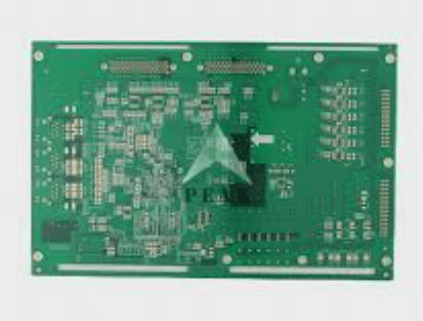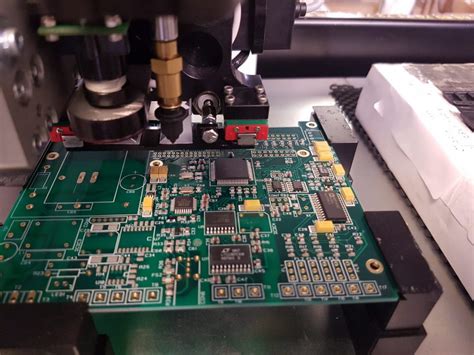Effective Heat Dissipation Techniques for PCB Circuits
Introduction
As electronic devices continue to shrink in size while increasing in power and functionality, managing heat dissipation in Printed Circuit Boards (PCBs) has become a critical challenge. Excessive heat can lead to component failure, reduced performance, and shortened lifespan of electronic devices. Therefore, effective thermal management is essential to ensure the reliability and longevity of PCBs. This article explores various techniques and strategies for enhancing heat dissipation in PCB circuits, covering design considerations, material selection, and advanced cooling methods.
1. Importance of Heat Dissipation in PCBs
1.1. Impact of Heat on PCB Performance
Heat is an inevitable byproduct of electronic components, especially in high-power applications. When heat is not effectively dissipated, it can cause several issues:
- Component Degradation: Excessive heat can degrade the performance and lifespan of electronic components, including integrated circuits (ICs), transistors, and capacitors.
- Thermal Stress: Temperature fluctuations can cause thermal stress, leading to mechanical failures such as solder joint cracks and delamination.
- Signal Integrity: High temperatures can affect the electrical properties of materials, leading to signal integrity issues and increased electromagnetic interference (EMI).
- Safety Concerns: Overheating can pose safety risks, including the potential for fire hazards in extreme cases.
1.2. Thermal Management Objectives
The primary objectives of thermal management in PCBs are:
- Maintaining Optimal Operating Temperatures: Ensuring that components operate within their specified temperature ranges to prevent overheating.
- Uniform Heat Distribution: Distributing heat evenly across the PCB to avoid hot spots that can lead to localized failures.
- Enhancing Reliability: Improving the overall reliability and lifespan of the electronic device by mitigating thermal-related issues.

2. Design Considerations for Heat Dissipation
2.1. Component Placement
Strategic placement of components on the PCB can significantly impact heat dissipation:
- High-Power Components: Place high-power components, such as power transistors and voltage regulators, in areas with good airflow and away from heat-sensitive components.
- Thermal Zones: Divide the PCB into thermal zones based on power dissipation and place components accordingly to manage heat distribution.
- Spacing: Ensure adequate spacing between components to allow for air circulation and reduce thermal coupling.
2.2. PCB Layout and Routing
The layout and routing of the PCB play a crucial role in thermal management:
- Copper Traces: Use wider copper traces for high-current paths to reduce resistance and heat generation.
- Thermal Vias: Incorporate thermal vias to transfer heat from the surface layers to the inner layers or the opposite side of the PCB, where it can be dissipated more effectively.
- Ground Planes: Utilize large ground planes to spread heat and provide a low-impedance path for heat dissipation.
2.3. Layer Stackup
The layer stackup of the PCB can influence its thermal performance:
- Thermal Conductive Layers: Include layers with high thermal conductivity, such as copper, to facilitate heat transfer.
- Dielectric Materials: Choose dielectric materials with good thermal properties to enhance heat dissipation.
- Thickness: Optimize the thickness of the PCB layers to balance thermal performance and mechanical stability.

3. Material Selection for Enhanced Heat Dissipation
3.1. Substrate Materials
The choice of substrate material can significantly impact the thermal performance of the PCB:
- FR-4: The most commonly used substrate material, FR-4, has moderate thermal conductivity. While suitable for many applications, it may not be sufficient for high-power designs.
- Metal-Core PCBs (MCPCBs): MCPCBs use a metal core, typically aluminum or copper, to provide excellent thermal conductivity. These are ideal for high-power LED applications and power electronics.
- Ceramic Substrates: Ceramic materials, such as aluminum oxide (Al2O3) and aluminum nitride (AlN), offer high thermal conductivity and are used in high-frequency and high-power applications.
3.2. Thermal Interface Materials (TIMs)
TIMs are used to improve the thermal contact between components and heat sinks:
- Thermal Paste: A common TIM, thermal paste fills microscopic gaps between surfaces to enhance heat transfer.
- Thermal Pads: Pre-formed pads made of thermally conductive materials that provide a consistent interface between components and heat sinks.
- Phase Change Materials (PCMs): PCMs change phase (solid to liquid) at specific temperatures, providing efficient heat transfer and thermal management.
4. Advanced Cooling Techniques
4.1. Heat Sinks
Heat sinks are widely used to dissipate heat from high-power components:
- Design Considerations: The design of the heat sink, including fin density, base thickness, and material, affects its thermal performance.
- Attachment Methods: Heat sinks can be attached using thermal adhesives, clips, or screws. Proper attachment ensures good thermal contact and effective heat dissipation.
- Active vs. Passive: Active heat sinks use fans or blowers to enhance airflow, while passive heat sinks rely on natural convection.
4.2. Thermal Vias and Planes
Thermal vias and planes are integral to PCB design for heat dissipation:
- Thermal Vias: These are plated holes that transfer heat from the surface layers to the inner layers or the opposite side of the PCB. They are particularly useful in multilayer PCBs.
- Thermal Planes: Large copper planes connected to thermal vias can spread heat across the PCB, reducing localized hot spots.
4.3. Liquid Cooling
Liquid cooling is an advanced technique used in high-power applications:
- Cold Plates: Cold plates are metal blocks with internal channels through which coolant flows. They are attached to high-power components to absorb and dissipate heat.
- Heat Pipes: Heat pipes are sealed tubes containing a working fluid that evaporates and condenses to transfer heat efficiently. They are used to move heat away from critical components to a remote heat sink.
- Immersion Cooling: In this method, the entire PCB or electronic assembly is immersed in a dielectric fluid that absorbs and dissipates heat.
4.4. Fans and Blowers
Forced air cooling using fans and blowers is a common method to enhance heat dissipation:
- Fan Placement: Proper placement of fans ensures effective airflow across the PCB, particularly over high-power components.
- Fan Speed Control: Variable speed fans can adjust airflow based on temperature, improving efficiency and reducing noise.
- Ducting: Ducts can be used to direct airflow precisely where it is needed, enhancing cooling performance.
4.5. Thermoelectric Cooling
Thermoelectric coolers (TECs) use the Peltier effect to create a temperature difference by applying an electric current:
- Advantages: TECs are compact, reliable, and can provide precise temperature control.
- Applications: They are used in applications requiring localized cooling, such as laser diodes and high-performance processors.
5. Thermal Simulation and Analysis
5.1. Importance of Thermal Simulation
Thermal simulation and analysis are essential tools in PCB design:
- Predictive Analysis: Thermal simulation allows designers to predict temperature distribution and identify potential hot spots before prototyping.
- Optimization: By simulating different design scenarios, designers can optimize component placement, layout, and cooling strategies to achieve the best thermal performance.
- Validation: Thermal analysis validates the effectiveness of cooling solutions and ensures that the PCB will operate within safe temperature limits.
5.2. Tools and Software
Several tools and software packages are available for thermal simulation and analysis:
- Computational Fluid Dynamics (CFD): CFD software, such as ANSYS Fluent and COMSOL Multiphysics, provides detailed thermal and fluid flow analysis.
- Finite Element Analysis (FEA): FEA tools, like ANSYS Mechanical and SolidWorks Simulation, are used to analyze thermal stress and deformation.
- PCB Design Software: Many PCB design software packages, such as Altium Designer and Cadence Allegro, include built-in thermal analysis features.
6. Conclusion
Effective heat dissipation is crucial for the reliability and performance of PCB circuits, especially in high-power and high-density applications. By considering design factors such as component placement, layout, and material selection, and employing advanced cooling techniques like heat sinks, thermal vias, and liquid cooling, designers can manage thermal challenges effectively. Additionally, thermal simulation and analysis provide valuable insights for optimizing PCB designs and ensuring safe operating temperatures. As electronic devices continue to evolve, innovative thermal management solutions will play a vital role in meeting the demands of modern technology.







